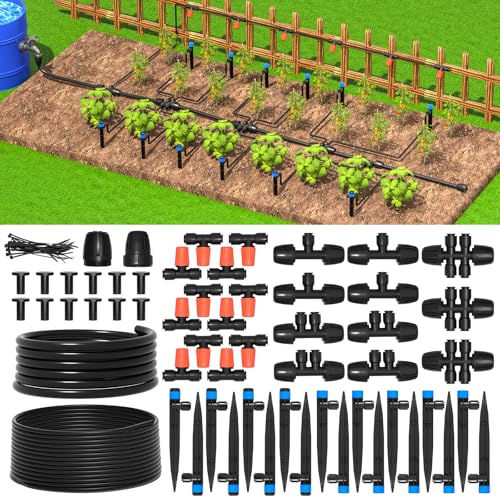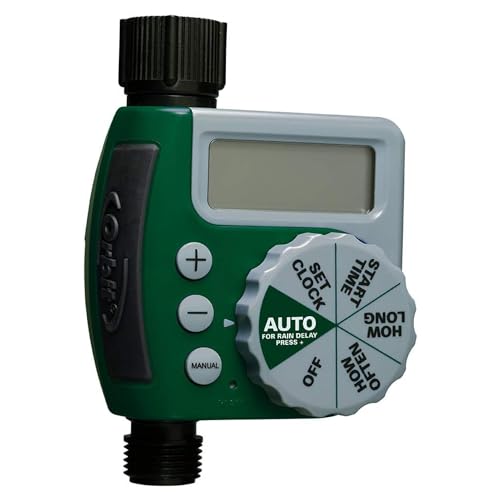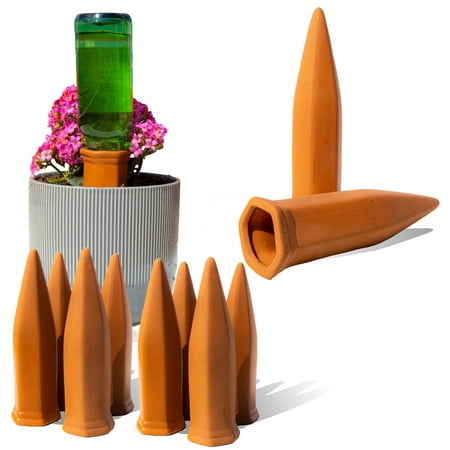How to care for tomatoes while on vacation – 5 key steps for happy, hydrated plants and peace of mind
A little bit of planning can ensure your tomatoes survive while you are away
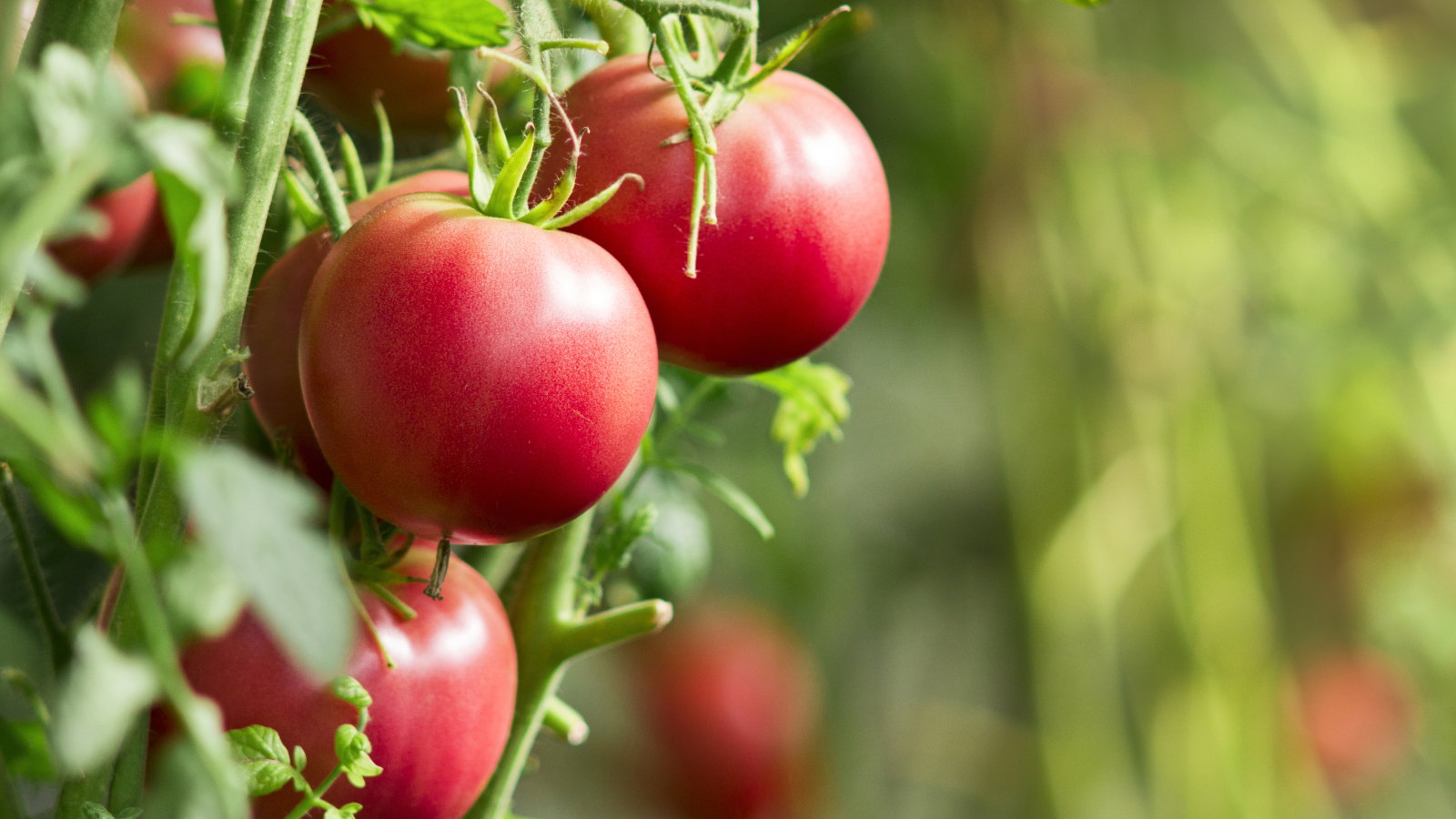
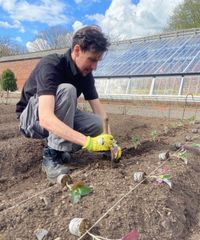
Tomatoes are undoubtedly among the most popular plants for homegrown produce. They flourish during the summer, which is also the time many gardeners go away for a break. This makes it essential to implement proper measures to care for tomatoes while on holiday.
Watering plants is the most crucial aspect to get right. Whether you are away for a few days or several weeks, there are various techniques for watering tomato plants during your absence. These methods can save you from returning to the disheartening sight of wilting or dying plants.
When growing tomatoes, there are simple ways to keep your plants healthy while you're away. This guide highlights five key techniques to care for tomatoes while on vacation to ensure they stay happy and healthy. And they’ll continue producing harvests long after you return from holiday.
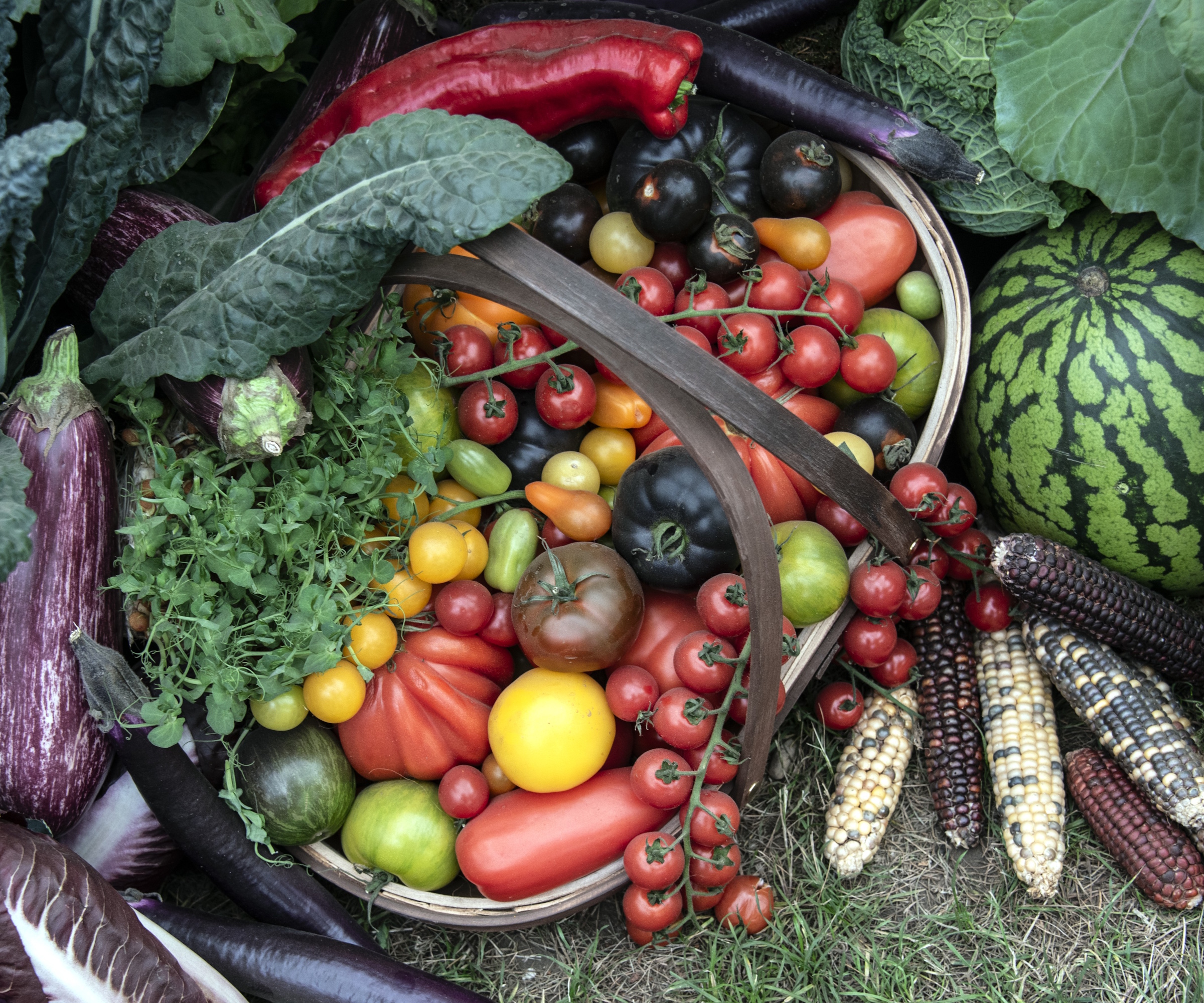
Tips for how to care for tomatoes while on vacation
How you care for tomatoes while on vacation may vary depending on when you are away.
For example, if you are away in spring, shortly after planting tomatoes, keeping them hydrated will be important, but potentially less challenging than in the middle of summer. You won’t need to worry about aspects like pruning and removing fruit until the plants reach that stage in their season.
So, choose whichever techniques are relevant to you. However, if you are away in summer, the following tips will all be applicable.
1. Keep tomato plants watered – ways and means to do it
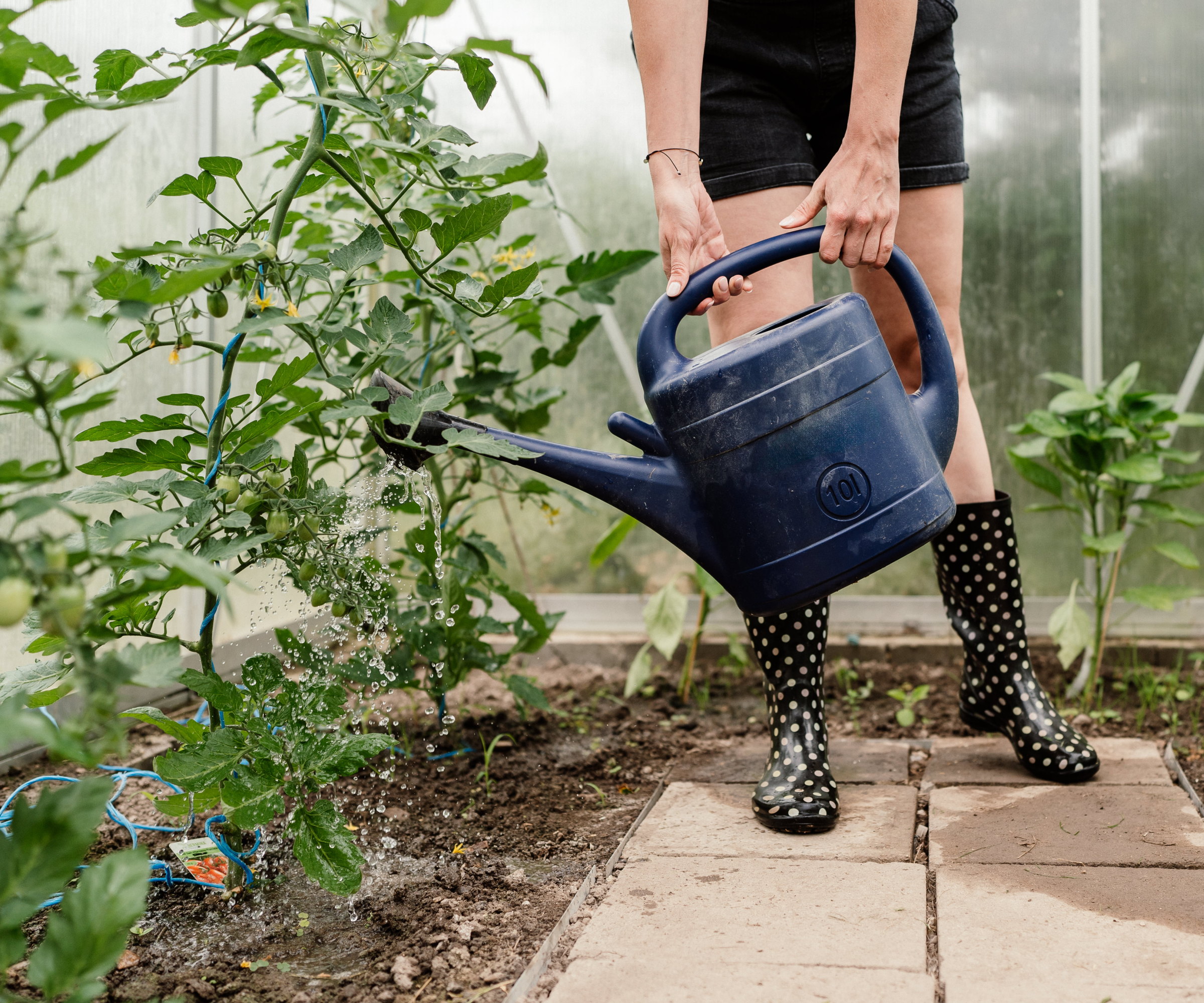
Watering is vitally important when growing tomatoes, and keeping plants well-hydrated is the most important aspect of caring for tomatoes while away on vacation.
Design expertise in your inbox – from inspiring decorating ideas and beautiful celebrity homes to practical gardening advice and shopping round-ups.
In an ideal situation, family, friends, or neighbors can come and water plants regularly for you. However, even if that is not possible, there are ways to water tomatoes while on vacation to stop your tomato plants from wilting or perishing.
Give plants a deep watering before going away, and consider one of the following strategies for watering tomato plants in your absence:
- Drip irrigation systems or soaker hoses can be set up on a timer to water plants and deliver water to the root zone. This is a reliable method of providing regular water exactly where the plants need it, and it can work for extended periods away.
- Use self-watering spikes or a DIY drip irrigation system out of a recycled plastic bottle for a short-term fix if you are away for a few days. Fill it with water, make a hole in the lid, and place the bottle upside down in the soil close to the plant’s roots.
- A wicking system can be set up to water plants by capillary action, similar to how self-watering planters work. This can be used for tomato plants in containers. It involves having a porous material like string, shoelaces, or strips of fabric in a container of water at one end and buried in the soil near the tomato plant at the other.
2. Mulch plants after watering
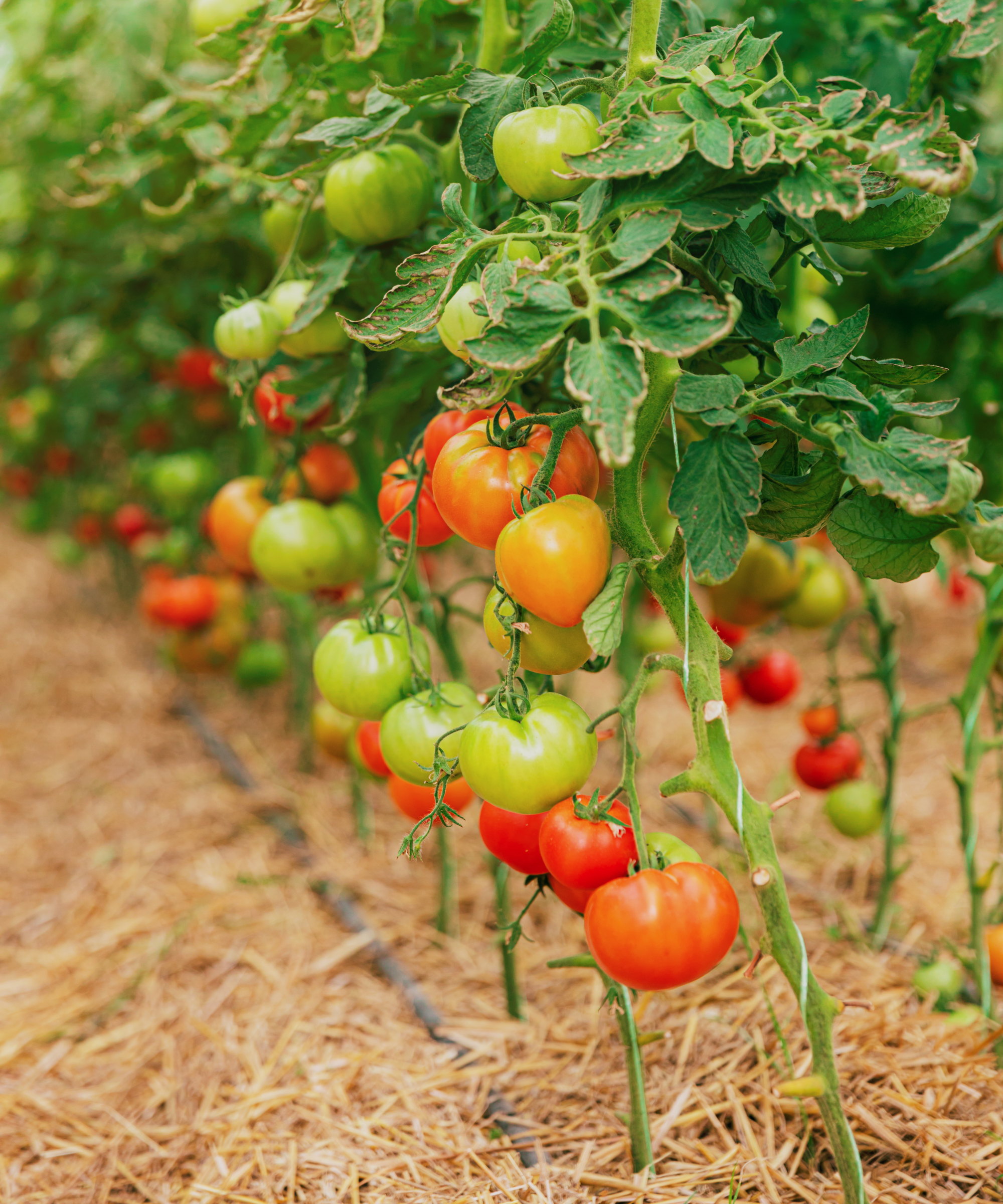
After giving plants a good watering, mulching around tomatoes will lock that moisture into the soil for longer. A two-inch-thick layer of mulch stops evaporation and keeps the moisture you applied where the plants will benefit for longer while you are away.
There are various types of mulch you can use around tomato plants to keep the soil moist in summer. The likes of compost, rotted manure, straw, bark, or grass clippings from mowing are all great materials to mulch tomato plants with.
Organic mulches are better than inorganic options like rocks, gravel, or rubber, as these get hot during the summer and can raise the soil temperature.
Try to put a couple of inches of mulch on the soil, and always maintain a gap around the stem of the tomato plant. Piling mulch against the stem risks it rotting.
3. Prune and tie-in tomato plants
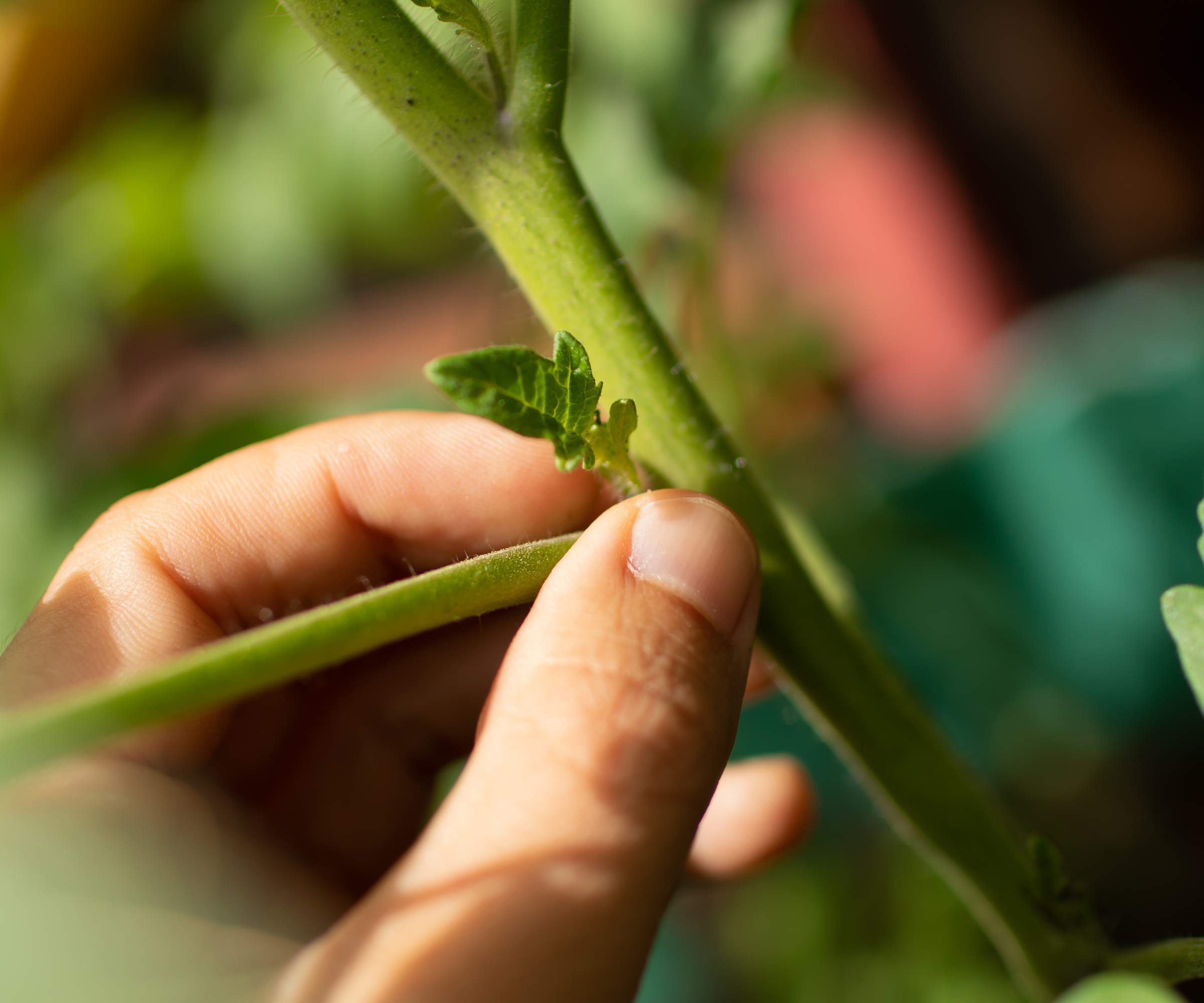
If you are growing indeterminate tomato varieties, take some time to prune tomato plants before going on vacation. This keeps plants healthy by boosting air circulation and prevents them from wasting energy on unwanted stems while you are away.
- Remove any suckers that appear between the main stem and leaf branches by pinching them off with your fingers (if they are small) or with a pair of clean and sharp pruning shears if they have gotten a bit larger.
- Remove the lower leaves to allow more light to the fruits and reduce the risk of soil-borne tomato diseases, such as tomato blight and fusarium or verticillium wilt, as well as fungal issues. Also, prune off any yellow tomato leaves so the plant remains healthy.
As well as pruning, train and tie-in the plants to their support or vegetable garden trellis before going away.
4. Harvest as many tomatoes as possible
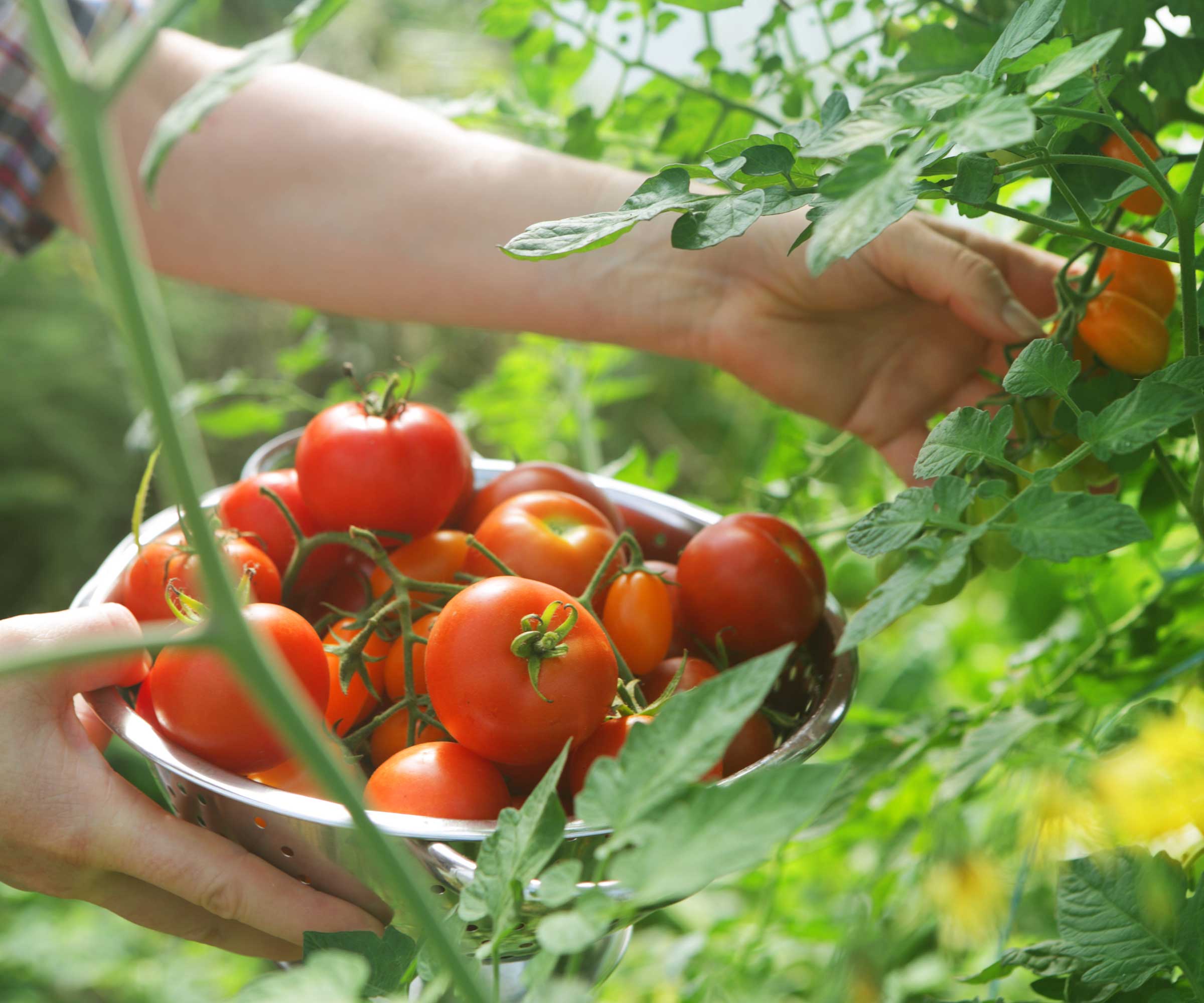
It is beneficial to harvest tomatoes before going on vacation. Spending a bit of time picking ripe and almost-ripe tomatoes off the plant stops those fruits from spoiling and taking energy away from future flowers and fruits.
Harvest as much as possible before vacation. That includes picking near-ripe fruits if you are going away for more than a few days, which can be put on a windowsill to finish ripening or left in the refrigerator.
If you have family, friends, or neighbors looking after plants, encourage them to harvest while you are away. This regular picking will encourage the development of new flowers and fruits for when you return.
5. Consider extra protection against intense sun
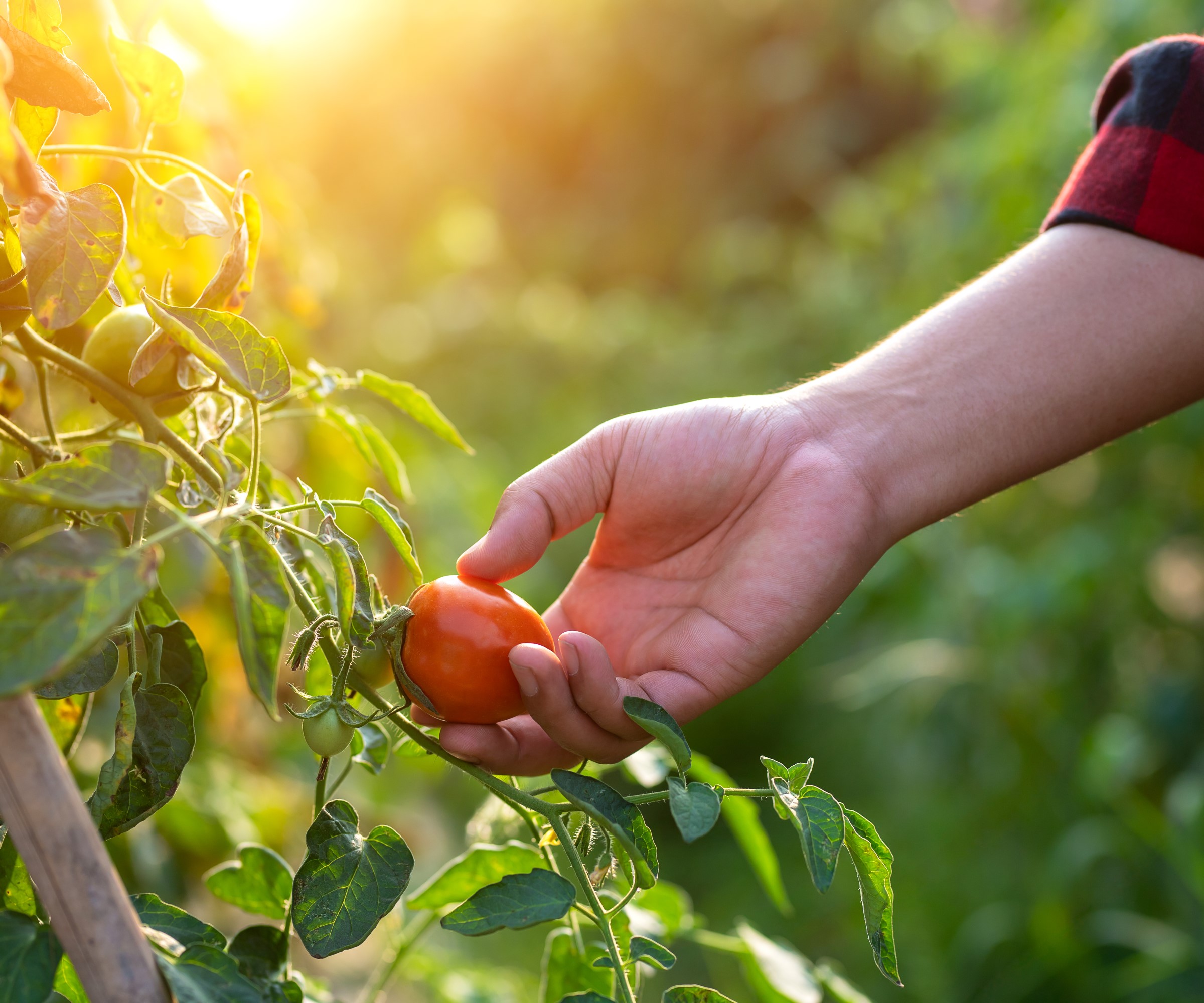
Extra care for tomatoes while on vacation may involve protecting them from the elements. This can be done wherever they are growing, and plants will benefit from that extra support.
A few simple techniques to protect plants in a heatwave can reduce water loss, heat stress, and ensure plants remain healthy for when you return home:
- If you are growing tomatoes in pots or grow bags, moving them to a shadier spot in the yard will reduce water loss during summer days.
- Opening doors and vents in your greenhouse will keep temperatures down and encourage air circulation to keep your tomatoes healthy
- Using shade cloth can protect tomatoes from hot summer rays, preventing wilting and leaf scorch. A good example is this 40% shade cloth available at Walmart.
Consistency with watering is key with tomatoes, while irregular watering can be problematic. Irregular or overwatering can cause tomatoes to split, and the bottom of the tomatoes to turn brown as they suffer from blossom end rot.
Keep a close eye on the soil moisture (using a soil moisture meter like this on Amazon helps) to avoid overwatering plants and having damaged fruits that have to be thrown away.
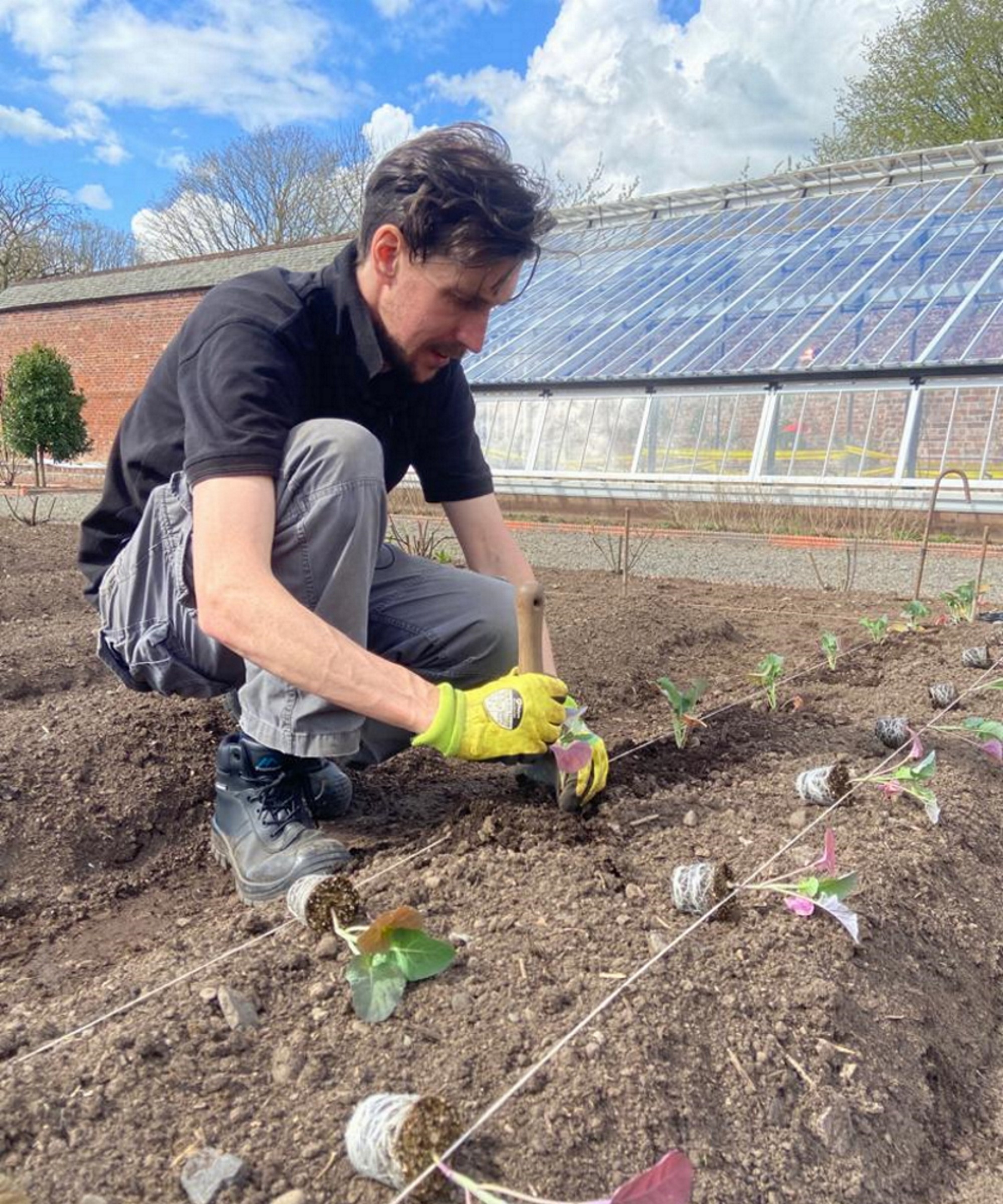
Drew has worked as a writer since 2008 and was also a professional gardener for many years. As a trained horticulturist, he worked in prestigious historic gardens, including Hanbury Hall and the world-famous Hidcote Manor Garden. He also spent time as a specialist kitchen gardener at Soho Farmhouse and Netherby Hall, where he grew vegetables, fruit, herbs, and cut flowers for restaurants. Drew has written for numerous print and online publications and is an allotment holder and garden blogger. He is shortlisted for the Digital Gardening Writer of the Year at the 2025 Garden Media Guild Awards.
You must confirm your public display name before commenting
Please logout and then login again, you will then be prompted to enter your display name.
